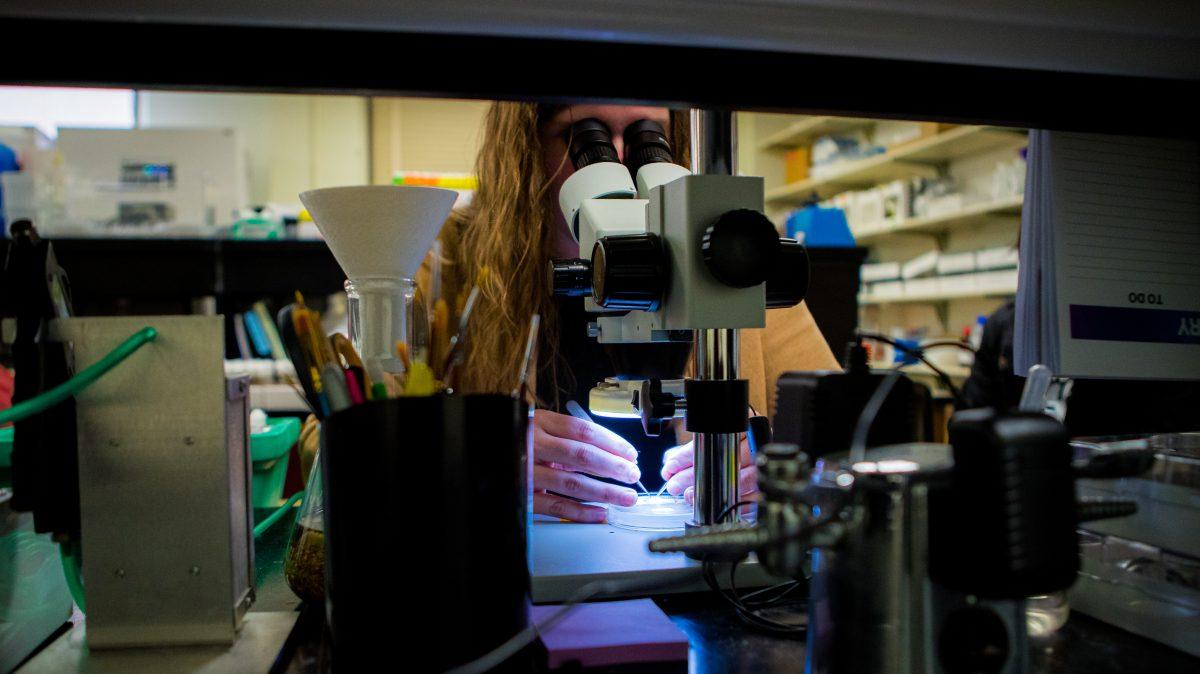Texas A&M received a $6 million grant to support a new Texas Regional Excellence in Cancer, or TREC, center.
TREC will focus on research regarding genetic and environmental factors in the development of cancer, Co-Director of the Cancer Prevention Clinicogenomics Registry Core Rick Silva, Ph.D., said. There are two core experiments of the center, along with a mentorship program, TREC Director Dr. Kenneth Ramos said.
The grant is a five-year grant, according to Texas A&M Today. The grants are renewable so if the program does well, there is a high chance of receiving another grant, said Ramos. There are additional means to fund the program, such as funding agencies and philanthropy that A&M can receive, Ramos said.
The money will be used for the center as soon as possible, TREC Deputy Director Robert Chapkin, Ph.D., said. Since the grant was announced, the center’s team has begun planning. The goal is to “hit the ground running,” Champkin said.
“We’ve already met, and we’re interacting and mobilizing with the assumption that the resources will follow us,” Chapkin said. “So we have essentially begun, and we are moving forward and launching all of these entities with many, many meetings.”
This is A&M’s first award for a TREC center, Silva said.
“The program is really a training and research resource for faculty to develop and widen their capabilities as they progress through their career,” Silva said.
The center will be administratively housed in the Health Science Center, but faculty from all departments are invited in, Chapkin said.
“We want this to be equal representation,” Chapkin said. “We welcome all academics from [A&M].”
The center’s research will be focused around a theme of molecular and population-level understanding of genetic, social and environmental factors, Silva said. Based on the expertise at A&M it was an appropriate focus, Silva said.
“The expertise of the team was sort of naturally aligned around understanding this triumvirate of a social, environmental and genetic aspect of cancer development,” Silva said.
Ramos said the center will have two core experiments. One experiment will focus on single-cell omics technology to understand the biological complexity, prevention and treatment of different cell types.
“The center itself has created two facility cores that … hopefully in five years time, we’ll be able to put this on the map if you would, in terms of our ability to carry out those experiments,” Ramos said.
The other focus will be a Cancer Prevention Clinicogenomics Registry Core, with Silva as the co-director, according to Texas A&M Today. Clinicogenomics looks at data sets patients provide, so researchers can look at both their genetic and environmental information, Silva said.
“We’re looking at social, socioeconomic, occupational and environmental factors that might contribute to the progression of the high-risk patients to developing cancer,” Silva said.
The center will have a mentorship program to identify early career investigators who have never received independent funding from a major agency, Ramos said. A mentoring plan will be developed so senior investigators can advise the new investigators, Ramos described it as similar to “private consultants” for a project.
The program will also allow the early career investigators to receive access to facility cores and expand their network by connecting with others, Ramos said.
“The average age for first-time award receipt by investigators is about 40 years old,” Ramos said. “What we are trying to do with a program like this is shift that curve to the left, [with the mentorship program] you can basically expedite the time that these individuals take to secure their first grant.”
Having better infrastructure and resources makes securing large grants very competitive, Ramos said.
The process of receiving the grant involved submitting a detailed application of the hypothetical center and then competing against the other submissions, Chapkin said.
“You don’t get the money just by applying for it,” Chapkin said. “You’ve got to come out on top.”
Ramos’ goal of the center is to unite all aspects of cancer research to impact the field and community, he said.
“I want to bring those different communities together in a way that enables A&M to develop very innovative strategies for prevention, treatment, and progression of cancer patients down the road,” Ramos said.









